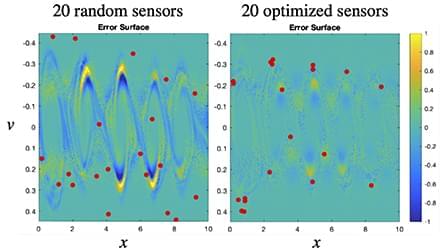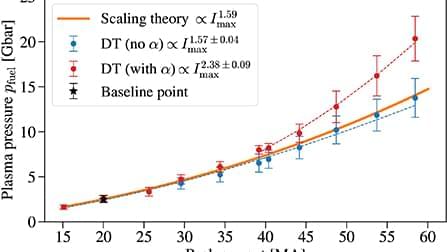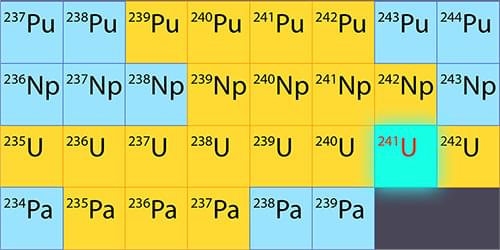An exploration of 10 Strange Ways Time Travel Could Be Possible without violating the laws of Relativity.
My Patreon Page:
https://www.patreon.com/johnmichaelgodier.
My Event Horizon Channel:
https://www.youtube.com/eventhorizonshow.
Music:
An exploration of 10 Strange Ways Time Travel Could Be Possible without violating the laws of Relativity.
My Patreon Page:
https://www.patreon.com/johnmichaelgodier.
My Event Horizon Channel:
https://www.youtube.com/eventhorizonshow.
Music:

There are approximately 30 trillion cells in a human body and our health is predicated on them properly interacting with and supporting each other, with the immune system playing a particularly pivotal role. One of the defining characteristics of aging is a decline in the proper functioning of our immune system. Centenarians, a rare population of individuals who reach 100 years or more, experience delays in aging-related diseases and mortality which suggests their immune systems remain functional into extreme old age.
Led by researchers from Boston University Chobanian & Avedisian School of Medicine and Tufts Medical Center, a new study finds centenarians harbor distinct immune cell type composition and activity and possess highly functional immune systems that have successfully adapted to a history of sickness allowing for exceptional longevity. These immune cells may help identify important mechanisms to recover from disease and promote longevity.
“Our data support the hypothesis that centenarians have protective factors that enable to recover from disease and reach extreme old ages,” said lead author Tanya Karagiannis, Ph.D., senior bioinformatician, Center for Quantitative Methods and Data Science, Institute for Clinical Research and Health Policy Studies at Tufts Medical Center.
To try everything Brilliant has to offer—free—for a full 30 days, visit http://brilliant.org/ArtemKirsanov/
The first 200 of you will get 20% off Brilliant’s annual premium subscription.
My name is Artem, I’m a computational neuroscience student and researcher. In this video we talk about cognitive maps – internal models of outside world that the brain to generate flexible behavior that is generalized across contexts.
Patreon: https://www.patreon.com/artemkirsanov.
Twitter: https://twitter.com/ArtemKRSV
OUTLINE:
00:00 — Introduction.
02:08 — Edward Tolman.
03:48 — Zoo of neurons in hippocampal formation.
06:40 — Non spatial mapping.
08:21 — Graph formalism.
12:21 — Latent spaces.
17:22 — Factorized representations.
21:51 — Summary.
24:47 — Brilliant.
26:19 — Outro.
REFERENCES (in no particular order):
1. Behrens, T. E. J. et al. What Is a Cognitive Map? Organizing Knowledge for Flexible Behavior. Neuron 100490–509 (2018).
2. Constantinescu, A. O., O’Reilly, J. X. & Behrens, T. E. J. Organizing conceptual knowledge in humans with a gridlike code. Science 352, 1464–1468 (2016).
3. Aronov, D., Nevers, R. & Tank, D. W. Mapping of a non-spatial dimension by the hippocampal–entorhinal circuit. Nature 543719–722 (2017).
4. Whittington, J. C. R., McCaffary, D., Bakermans, J. J. W. & Behrens, T. E. J. How to build a cognitive map. Nat Neurosci 25, 1257–1272 (2022).
5. Whittington, J., Muller, T., Mark, S., Barry, C. & Behrens, T. Generalisation of structural knowledge in the hippocampal-entorhinal system.
CREDITS:

Threat actors used a well-liked piece of corporate communication software from 3CX, according to security experts. In particular, reports state that a desktop client for the 3CX VoIP (Voice over Internet Protocol) service was used to specifically target 3CX’s clients.
It is believed that the attack is a multi-part process, with the first stage using a hacked version of the 3CX desktop application. Although the.exe file and the MSI package have the same name, preliminary research indicates that the MSI package is the one that may include DLLs that have been maliciously modified.
The beginning of the infection process occurs when 3CXDesktopApp.exe loads the ffmpeg.dll file. After that, ffmpeg.dll will read the encrypted code from d3dcompiler_47.dll and then decode it. It seems that the decrypted code is the backdoor payload that attempts to visit the IconStorage GiHub page in order to access an ICO file that contains the encrypted C&C server that the backdoor connects to in order to acquire the probable ultimate payload.
Researchers from multiple security companies have reported that a massive supply chain attack on users of 3CX, a widely utilized voice and video calling desktop client, was carried out by computer hackers working on behalf of the government of North Korea. The attack targeted users of the Windows and macOS operating systems. 3CX users may make calls, examine the status of colleagues, chat, plan a video conference, and check voicemails all from the desktop program by using the 3CXDesktopApp, which is accessible for Windows, macOS, Linux, and mobile devices.
The attack resulted in the compromising of the software build system that was used to generate and distribute versions of the app for Windows and macOS. The app delivers VoIP and PBX services to “over 600,000 clients,” some of which include American Express, Mercedes-Benz, and Price Waterhouse Cooper. Since the attackers controlled the software development system, they were able to insert malware into 3CX applications, even though those applications had been digitally signed using the official signing key for the firm.
This is a traditional kind of attack on supply chains, and its purpose is to take advantage of the trust connections that exist between an organization and third parties.


Many scientific problems can be formulated as sparse regression, i.e., regression onto a set of parameters when there is a desire or expectation that some of the parameters are exactly zero or do not substantially contribute. This includes many problems in signal and image processing, system identification, optimization, and parameter estimation methods such as Gaussian process regression. Sparsity facilitates exploring high-dimensional spaces while finding parsimonious and interpretable solutions. In the present work, we illustrate some of the important ways in which sparse regression appears in plasma physics and point out recent contributions and remaining challenges to solving these problems in this field. A brief review is provided for the optimization problem and the state-of-the-art solvers, especially for constrained and high-dimensional sparse regression.

